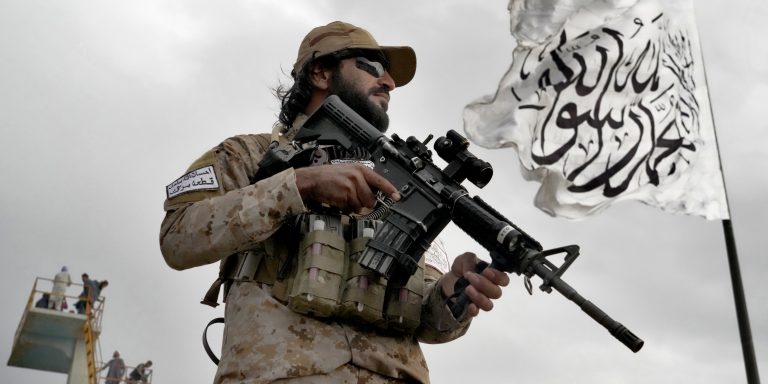INTELBRIEF
August 15, 2022
IntelBrief: One Year After the Taliban’s Takeover, what is the State of Afghanistan?

Bottom Line Up Front
- One year after their takeover of Afghanistan, the Taliban have struggled to govern the country, maintained a close relationship with al-Qaeda, and fostered an atmosphere of violence, insecurity, and economic stagnation.
- The situation for women and girls in Afghanistan has drastically deteriorated since the Taliban consolidated power in August 2021, with access to education and employment being greatly curtailed.
- The Islamic State Khorasan (IS-K) has waged a relentless insurgency in eastern Afghanistan and has targeted the country’s Shia Hazara community, demonstrating that the Taliban is either unwilling or unable to protect ethnic and religious minorities throughout the country.
- Ayman al-Zawahiri’s presence in Kabul substantiated concerns that Afghanistan will once again become a safe haven for militant jihadist groups determined to strike the West, including Europe and the United States.
One year after the Taliban’s takeover of Afghanistan, the country is in a far worse position than it was in August 2021. The Taliban have struggled to govern Afghanistan, continued a close relationship with militant groups including al-Qaeda, and fostered an atmosphere of violence, insecurity, and economic stagnation. The economy is teetering on the brink of collapse, and a substantial portion of Afghanistan’s nearly 40 million people are experiencing food insecurity and in some cases are at risk of starvation. Conditions are indeed grim, reports over the last several months suggest that some Afghans are so desperate that they have resorted to selling their own children. The Taliban have no experience managing a successful economy, and their draconian governance disincentivizes potential investors and businesses that would otherwise provide much needed infusions of foreign capital for the cash strapped economy.
The situation for women and girls in Afghanistan has drastically deteriorated since the Taliban consolidated power. Throughout most of the country, girls remain barred from classrooms and women have lost access to most employment opportunities, having to follow strict Taliban guidelines to access what little they can. Following the withdrawal of U.S. and allied forces last August, most analysts predicted the disaster that would follow for women and girls living under the Taliban’s harsh rule. Even the modest gains they achieved over the last two decades have been reversed or negated. The Taliban still cling to antiquated notions of gender inequality, which in addition to being unjust are also counterproductive for a country that needs to maximize the potential of its people to resuscitate its economy and government institutions. The Taliban’s re-imposition of systemic and institutionalized misogyny has attracted widespread condemnation at home and abroad. This censuring appears to have had little impact on Afghanistan’s de facto government, though international actors continue to offer the possibility of formal recognition of the government as a potential incentive for change. Continued restrictions on women and girls could trigger further U.S. sanctions and jeopardize international assistance that is vital to the Afghan economy and people.
Decades of experience fighting as an insurgent group have not translated to an ability to maintain security throughout the country. Now tasked with the role of counterinsurgents, the Taliban have been unable to effectively protect Afghans. The Islamic State Khorasan (IS-K), the ISIS branch in Afghanistan, has waged a relentless insurgency in parts of eastern Afghanistan and displayed an ability to conduct high-profile attacks in Kabul. IS-K attacks have also targeted Afghanistan’s Shia Hazara community, demonstrating that the Taliban is either unwilling or unable to protect ethnic and religious minorities throughout the country, itself having a poor record in this regard. IS-K has also fired rockets and launched cross-border attacks into neighboring countries, including Uzbekistan and Tajikistan, further destabilizing an already unstable region. The group also maintains a relationship with the Islamic Movement of Uzbekistan (IMU), a regional jihadist group that is growing in strength and appears poised to capitalize on the increase in less governed spaces in Central Asia.
The recent killing of al-Qaeda’s longtime leader Ayman al-Zawahiri in Kabul is further evidence that the Taliban violated the Doha Agreement by maintaining a close relationship with al-Qaeda. Zawahiri was killed by a U.S. drone strike on the balcony of a house that allegedly belonged to Siraj Haqqani, the leader of the Haqqani network and a top official in the Taliban’s government, despite being on a U.N. sanctions list (QDi.006). Though the Taliban claim they had no knowledge that Zawahiri was living in Kabul, few if any serious analysts find this to be a credible claim. It further reinforces concerns that Afghanistan will once again become a safe haven for militant jihadist groups determined to strike the West, including Europe and the United States. Various assessments by U.S. government and intelligence officials suggest that al-Qaeda may be able to reconstitute its external attack network within the next 12 to 24 months. If Afghanistan yet again devolves into a launching pad for jihadist groups to plot transnational terrorist attacks, pressure will mount on the Biden administration to increase U.S. involvement, perhaps beyond the ‘over-the-horizon’ approach which currently forms the backbone of its counterterrorism strategy. Moreover, without complementary counterterrorism and preventative measures, such tactical successes will not necessarily change the long-term viability of groups that can leverage grievances linked to critical deficits in governance, human rights, and security to gain support and drive recruitment.